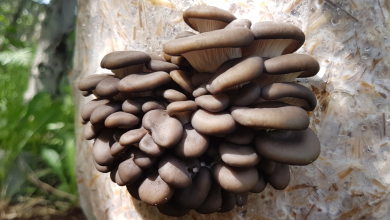Dichondra: [Characteristics, Care, Planting and Reproduction]
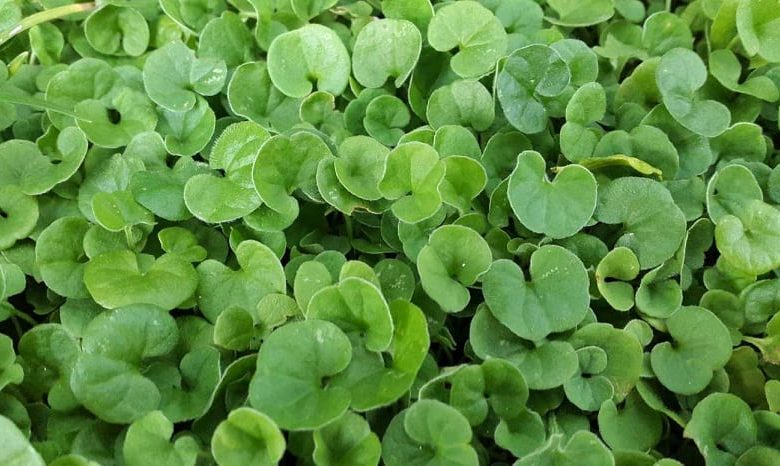
Important points when planting Dichondra:
- When? Between May and October.
- Where? Outdoors, preferably in shade, but also resistant to direct sun.
- How do we prepare the land? The land is prepared with the plow more or less deep to give it enough looseness. You have to free it of weeds and also add a layer of organic fertilizer.
- How should we water? With the use of a hose, as you normally would with the lawn.
- How often do you have to water? The irrigations are very spaced, being able to apply one every 5 days in summer and reduce to 1 a week in winter.
- What care do you need? Paid before sowing, attention to the presence of weeds.
- What pests and diseases does it have? Fungi and beetles are the main enemies of dichondra. These usually appear with high humidity.
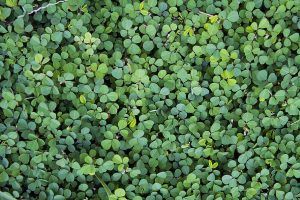 Dichondra, also known as kidney grass, is a tiny plant that is usually planted in gardens as a substitute for lawns.
Dichondra, also known as kidney grass, is a tiny plant that is usually planted in gardens as a substitute for lawns.
Its scientific name is Dichondra Repens and its shape, like small kidneys, becomes very striking to anyone.
As it is evergreen, it fulfills its role of serving as a carpet for gardens throughout the year very well. We have many things to say about the dichondra, including everything related to its care, and that is exactly what we will do next. Are you coming?
What is dichondra?
The dichondra is a plant with small leaves that grows attached to the ground, covering it as if it were a natural carpet. Due to the curious shape of its leaves, it not only acts as a substitute for grass, but also provides an ornamental addition.
Now, for the latter to remain so over time, it is very important that it is not subjected to frequent trampling, because it will be crushed.
A good feature of this species is that it is low maintenance, which is beneficial in reducing the impact of yard work.
And since it is possible to plant it in very specific spaces (if it is not used as grass in the entire land) it is easier to ensure that it is always very healthy.
What kind of plant is dichondra?
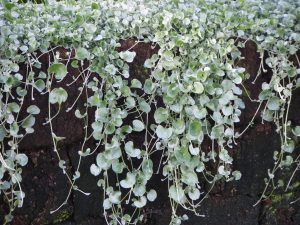
The dichondra is a small perennial type plant that is often used for decorative purposes in the garden to cover the ground spaces.
Above all it is applicable in those areas that are under shade. It belongs to the Convolvulaceae family.
And it becomes an invasive species if it is not controlled and finds the ideal conditions for it in its environment. Normally this happens with high humidity in the environment.
How to care for dichondra?
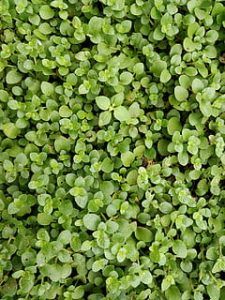 One of the most striking aspects of this species is oriented to care, which are very few.
One of the most striking aspects of this species is oriented to care, which are very few.
In the first place, it is a species that consumes less water than that required by the lawn. In fact, watering every 5 days in summer is more than enough.
It must be in spaces where frosts are not frequent because it could turn brown. Even so, it is capable of resisting temperatures down to -9º C.
Either way, it tends to green up in the spring if its roots are in good condition.Fertilizing after sowing is not essential, but to promote further expansion, it is possible to apply a granulated type at the beginning of spring.
If weeds appear in your environment and space is limited, it is possible to remove the invaders by extracting the entire plant by hand. When it comes to a larger space, it would be necessary to resort to the mowing procedure.
Under no circumstances is the use of herbicides approved because it could cause the death of dichondra.
When is dichondra planted?
The dichondra offers a wide range of time to sow, covering from May to October, approximately. Even when spread by dice, it is possible to cover a more open range.
How is dichondra planted?
The main characteristic of dichondra is resistance and vigor, which allows it to grow in any type of soil. In addition to that, it is also capable of adapting to the most varied climates, so it will remain active all year round.
The only problem arises in areas with very cold winters that cause frost because it will lose its bright green to turn an ugly brown.
It prefers spaces that are in the shade, but it is able to adapt well to direct sun, although the latter prevents it from growing tall. As a curious fact, it is worth knowing that in the shade, the dichondra can reach up to 15 centimeters in height.
Now, after planting, the dichondra takes its time to begin to form and develop as we wish and this period can take up to 5 months.
How does dichondra reproduce?
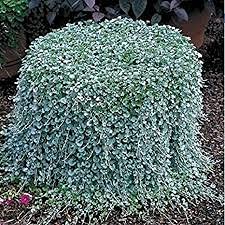 The dichondra reproduces by means of seeds that are dispersed in a field with the appropriate conditions to receive them.
The dichondra reproduces by means of seeds that are dispersed in a field with the appropriate conditions to receive them.
Here it is essential that it is well tilled, conditioned with fertilizer and, of course, free of other weeds.
Dice is another method that is often used and is much more feasible because you already have the work in advance and the chances of the plant growing are almost absolute.
However, it is not a much faster method because it could take up to 4 months for us to see results.
How do you prune the dichondra plant?
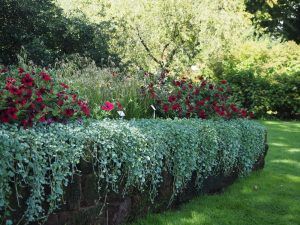
Due to the characteristics of the species, the dichondra is not a plant that is usually subjected to pruning.
However, when it is kept in shade and reaches its maximum height, around 15 centimeters, a light pruning can be applied to reduce the size.
The dichondra can be used to supplant the lawn in the garden, but more often it is used for very specific areas.
For example, it can be planted under a bench, in the contour of a tree or generating specific shapes in the garden as decoration.
As it is a plant with such good characteristics and beautiful appearance, it is usually used in different scenarios. Would you like to take advantage of it too?
Bibliographic references
- Dichondra repens, M BINDI – Giardino Fiorito, 1997 – sidalc.net
- Analysis of water erosion in slopes planted with dichondra in autumn, P Mora, F Ariel – 2014 – repobib.ubiobio.cl
- Essential oil composition and antibacterial activity of Dichondra repens, JZ Wu, PH Qiu, Y Li, XF Yang, L Lin, CC Ai – Chemistry of the natural…, 2009 – Springer
- Leaf spots of Dichondra spp. (Mouse ear), Convolvulaceae, F Anderson, R Delhey – Journal of the Faculty of Agronomy, 1999 – sedici.unlp.edu.ar
- RUST (Puccinia dichondrae Mont.) AFFECTED EL CENTAVITO, B Pineda-López – researchgate.net

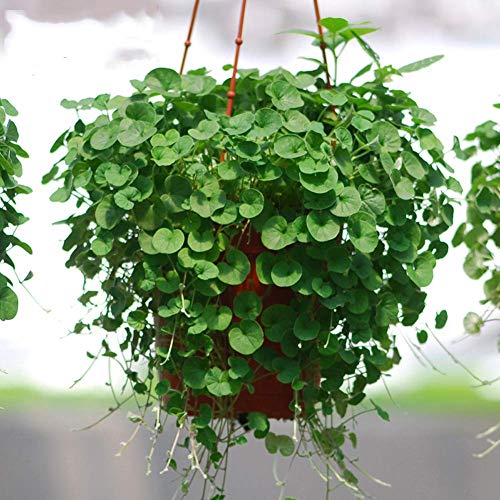
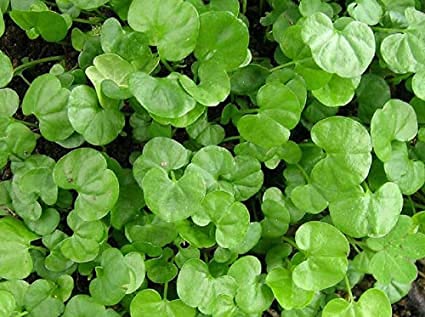
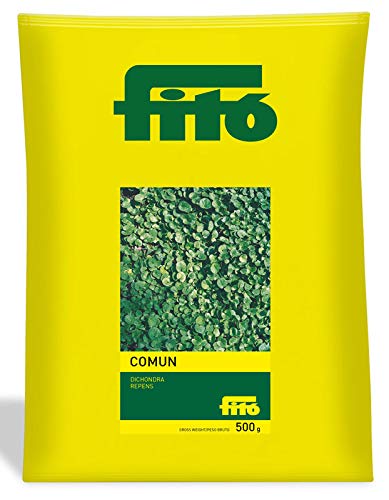
![Photo of Tundra Climate: [Characteristics, Flora, Fauna and Adaptability]](https://www.complete-gardening.com/wp-content/uploads/2022/08/tundra-climate-characteristics-flora-fauna-and-adaptability-390x220.jpg)

![Photo of What diseases and pests attack the cherry tree? [Identify and Treat]](https://www.complete-gardening.com/wp-content/uploads/2022/08/what-diseases-and-pests-attack-the-cherry-tree-identify-and-treat-390x220.jpg)
